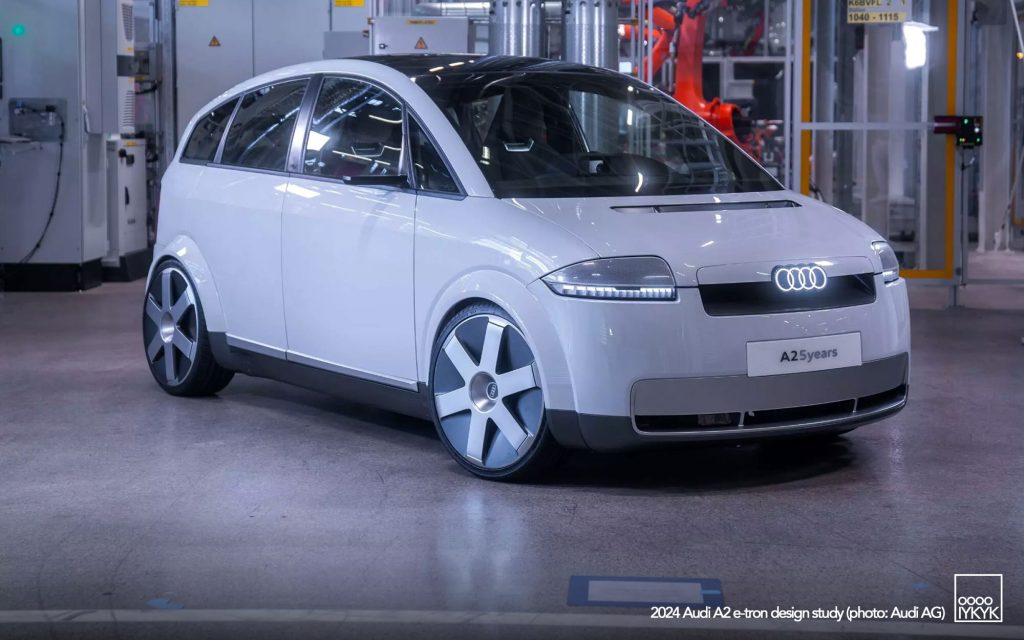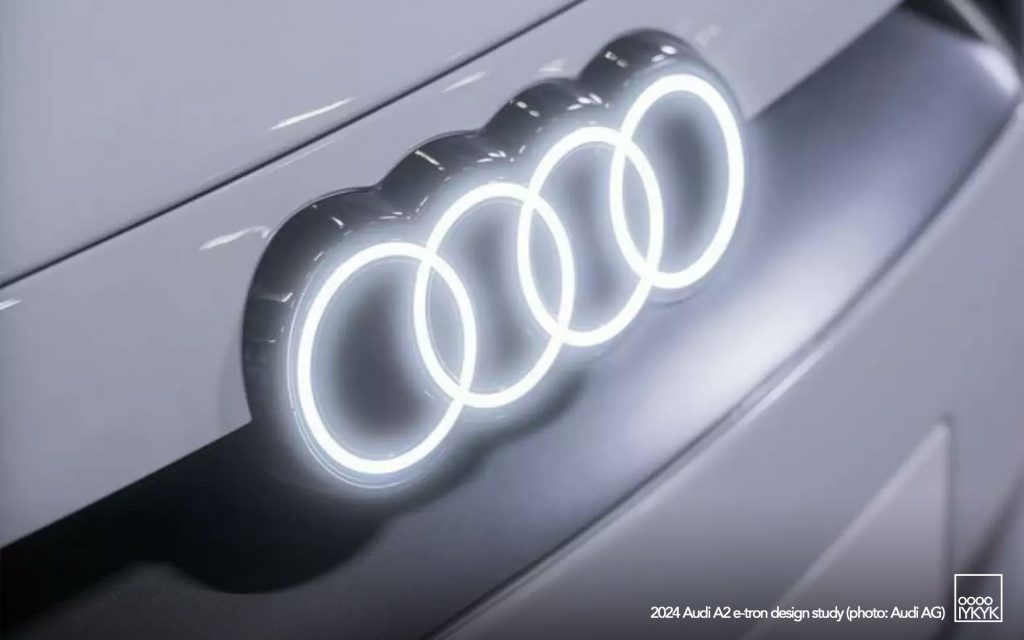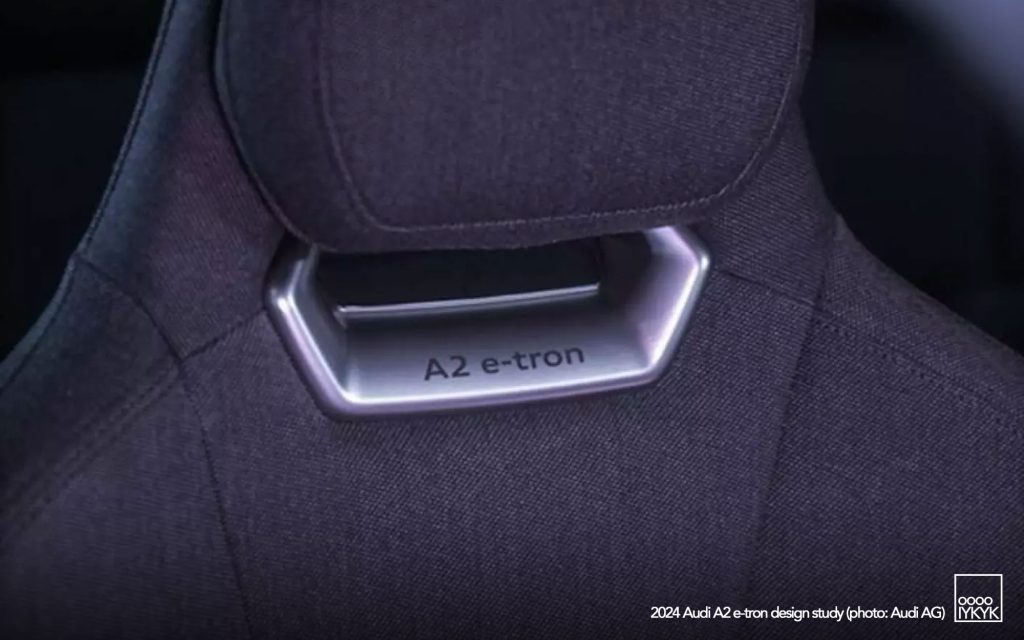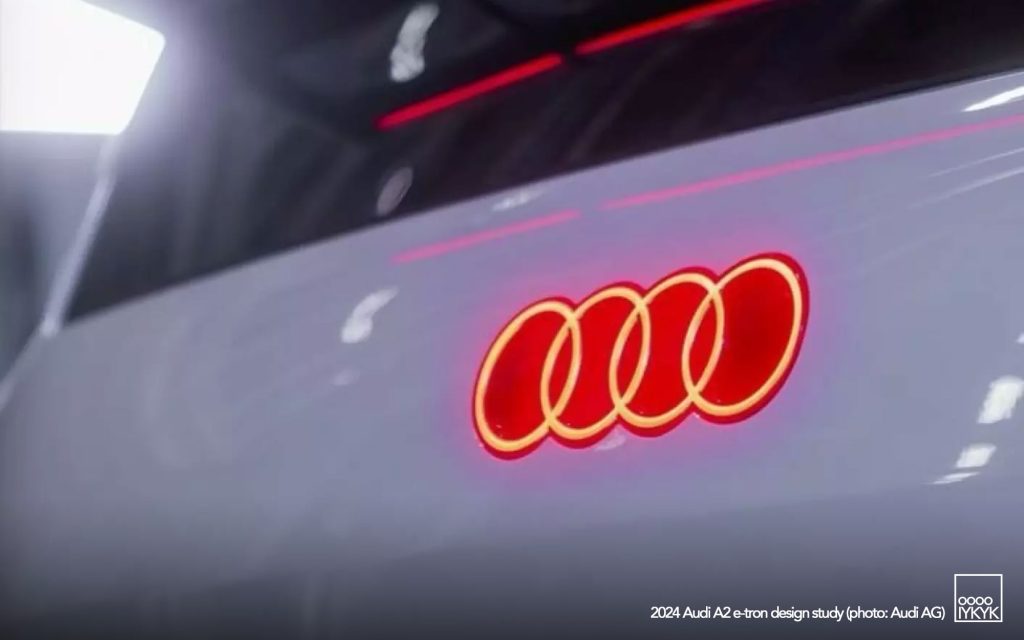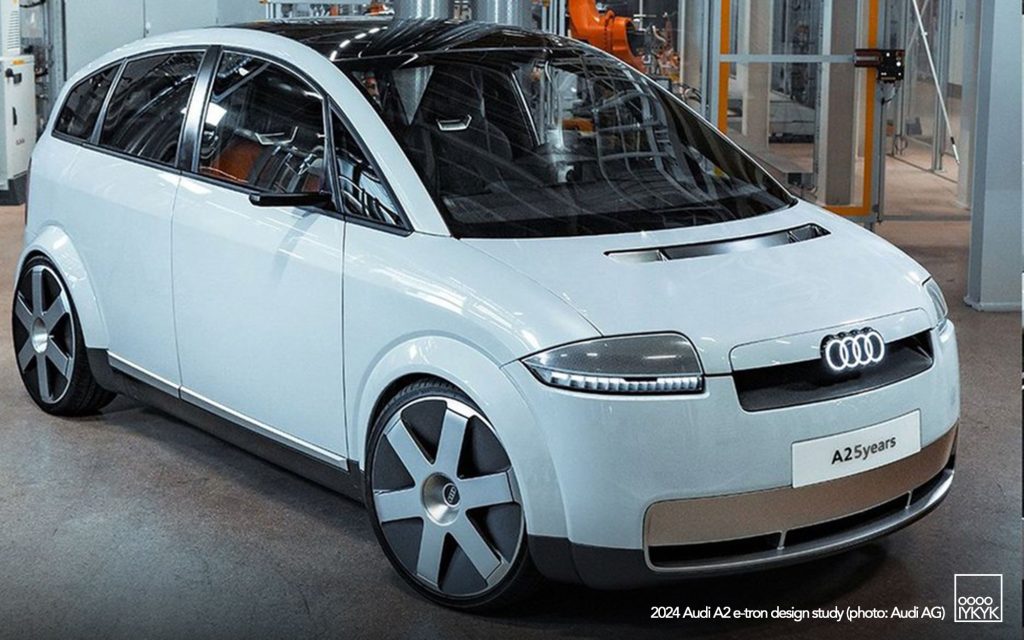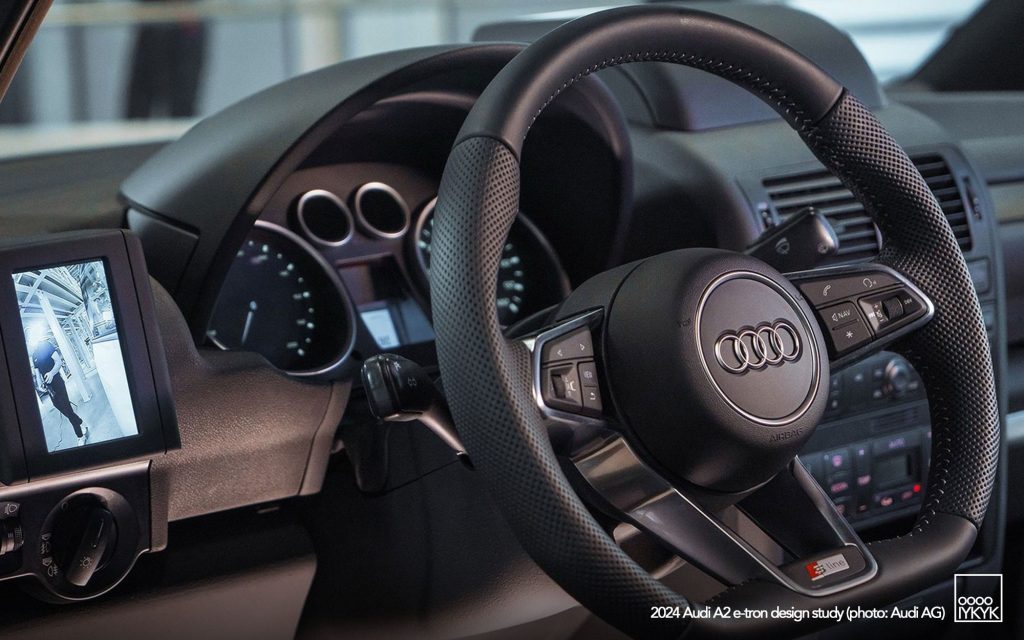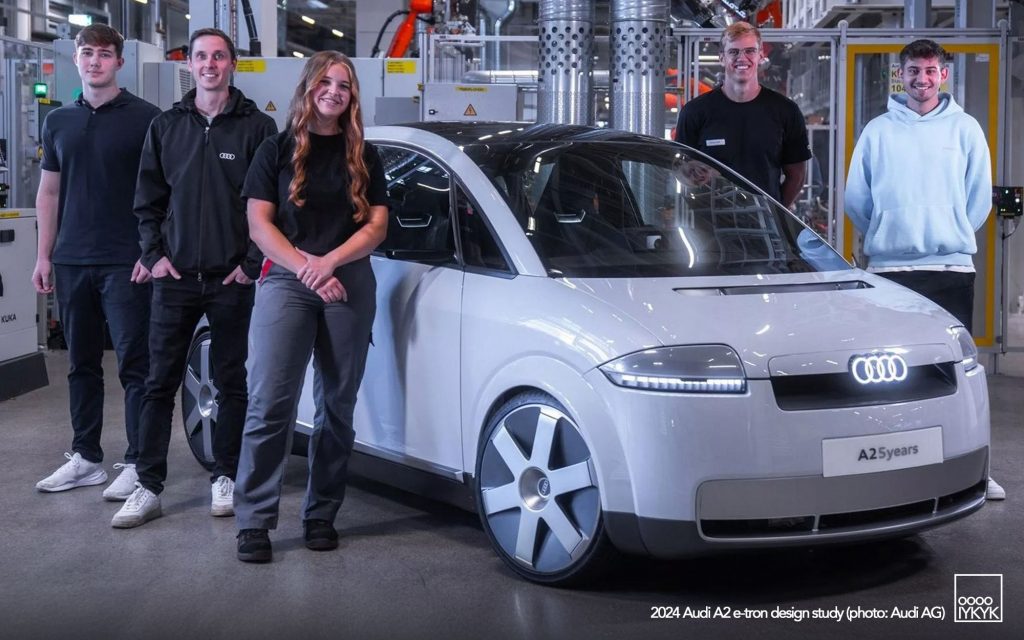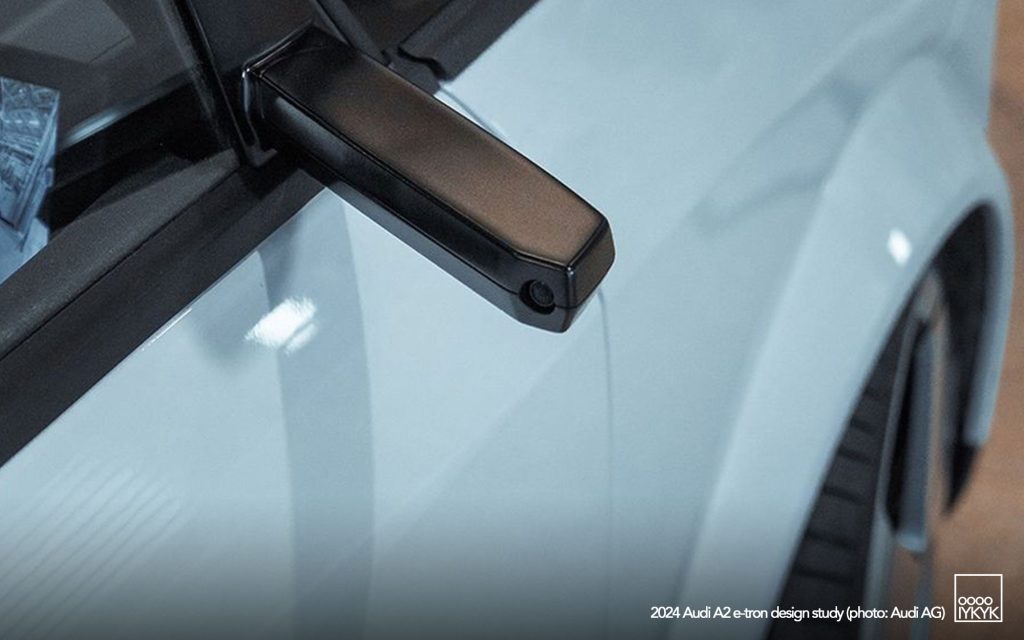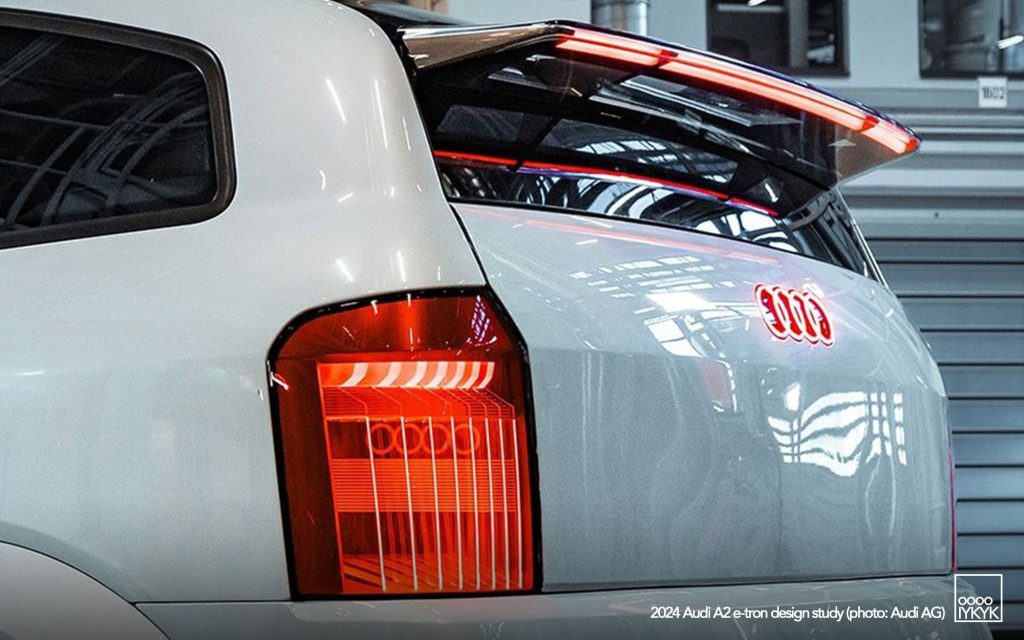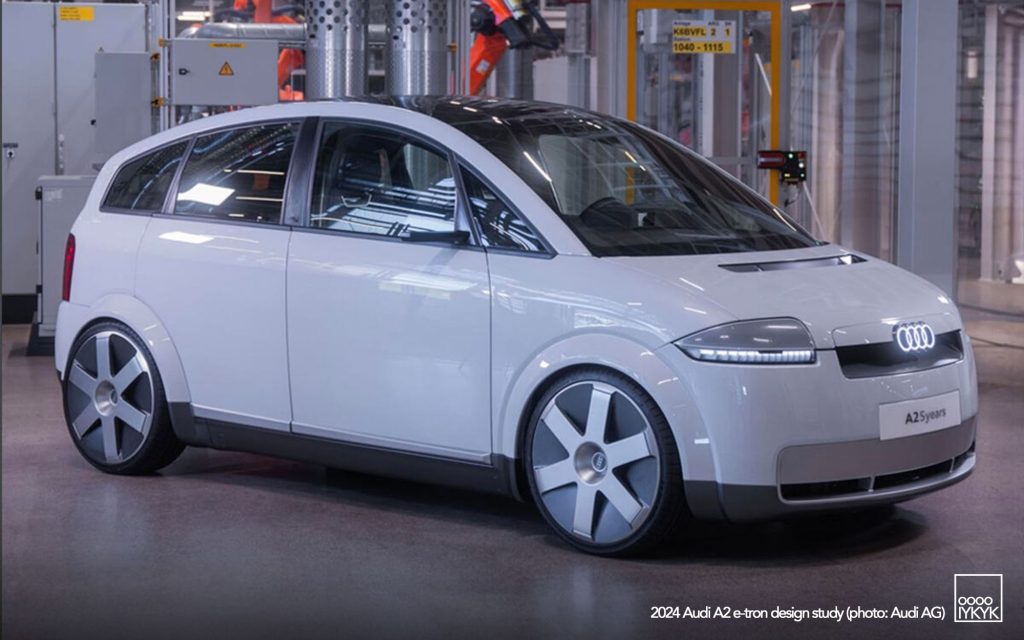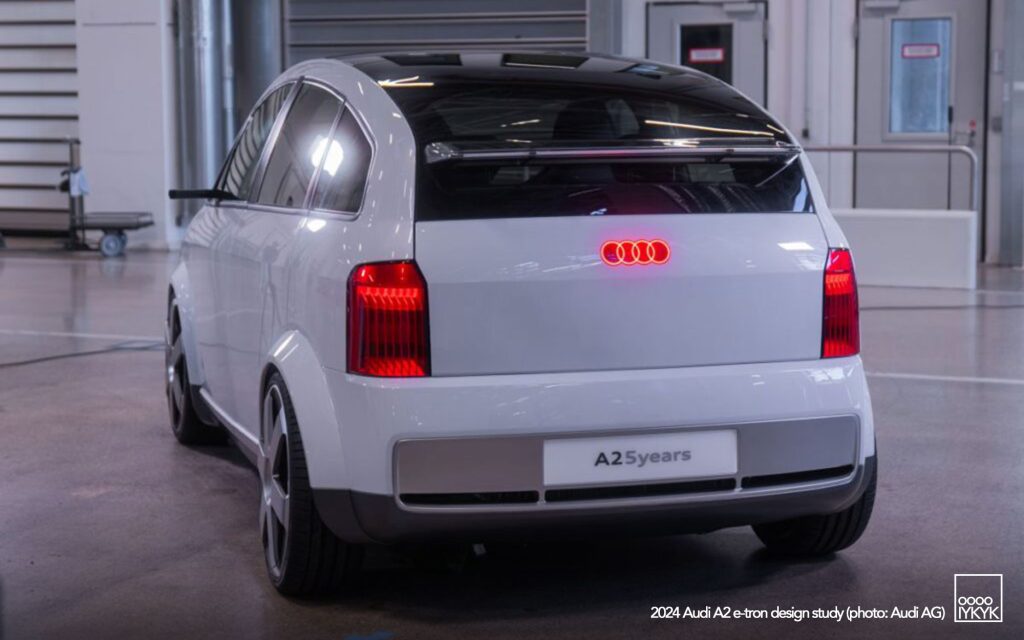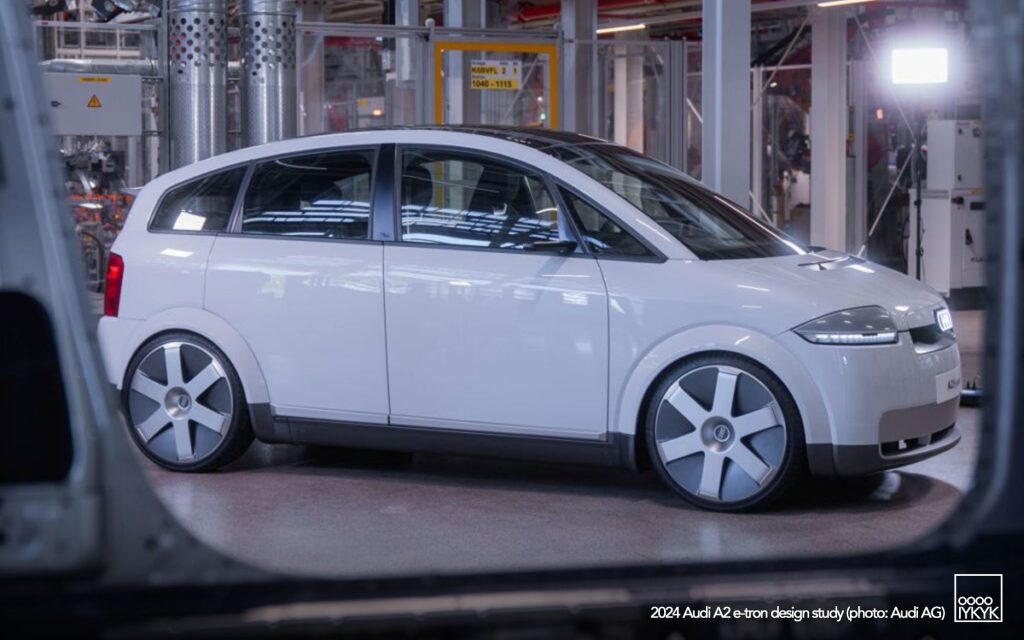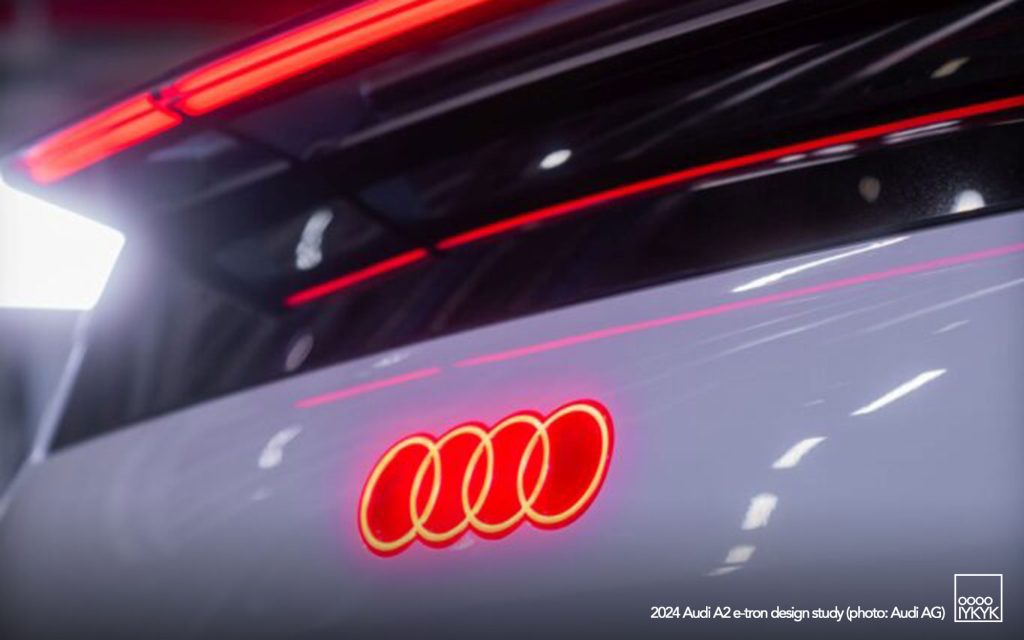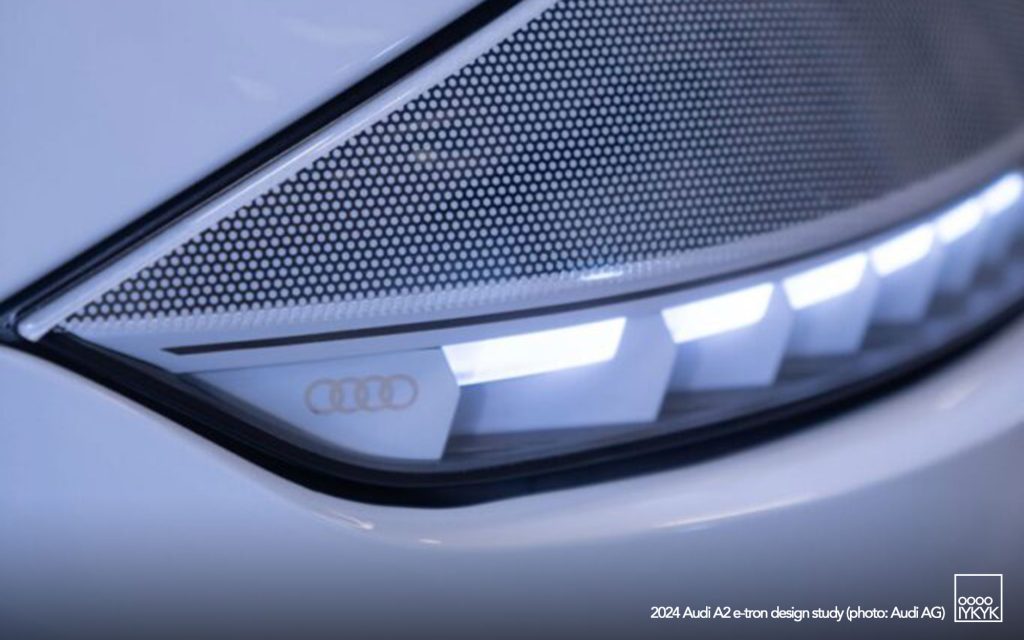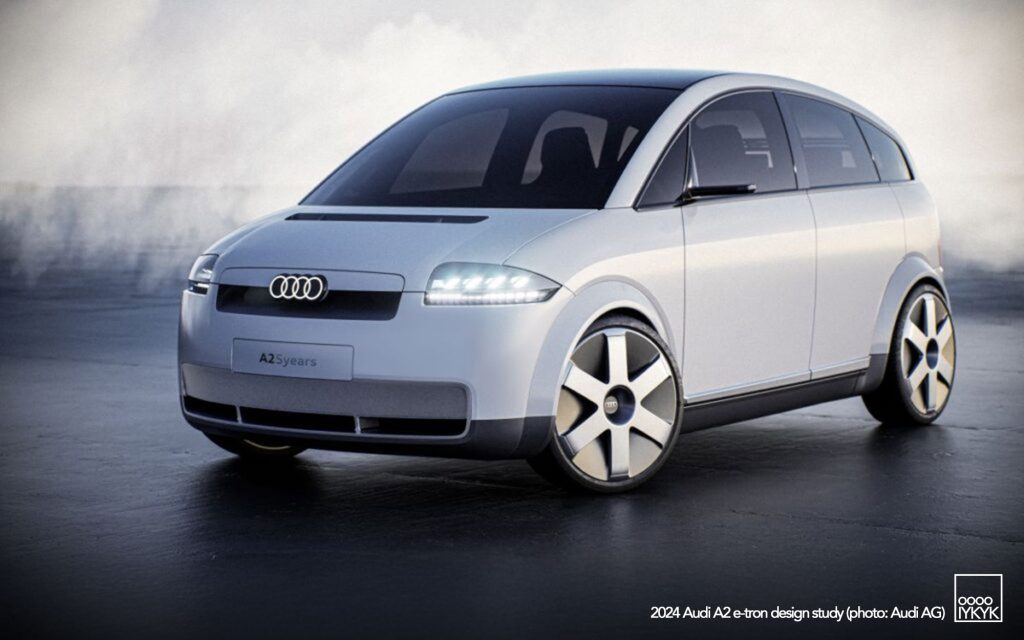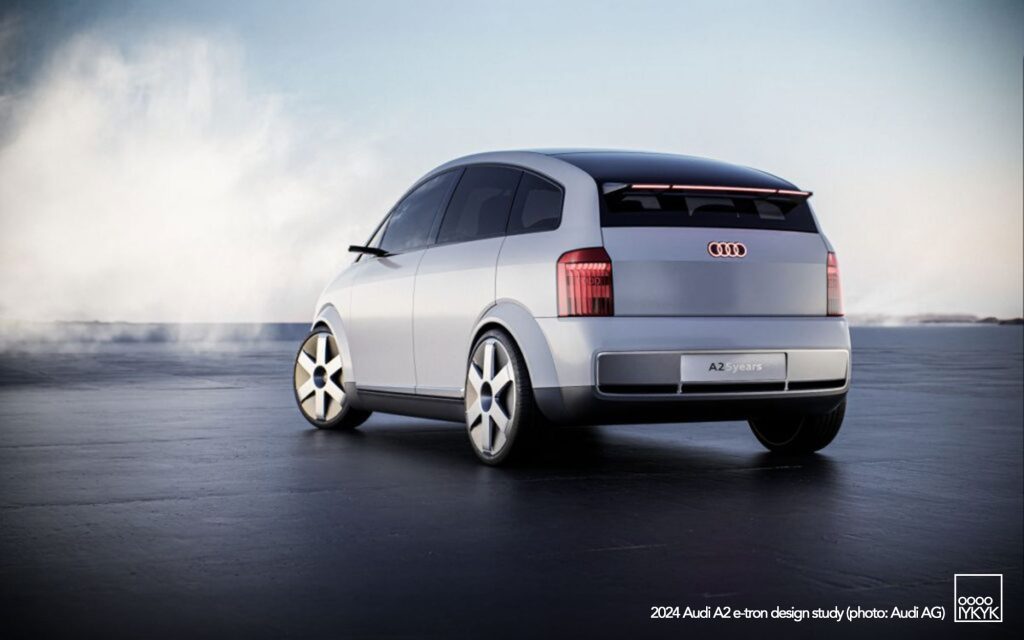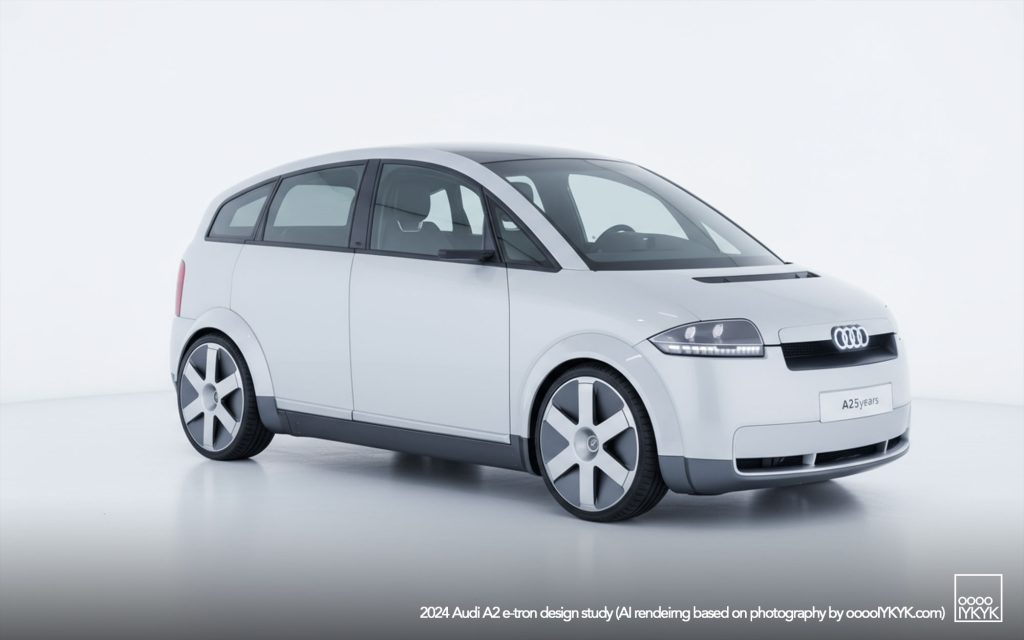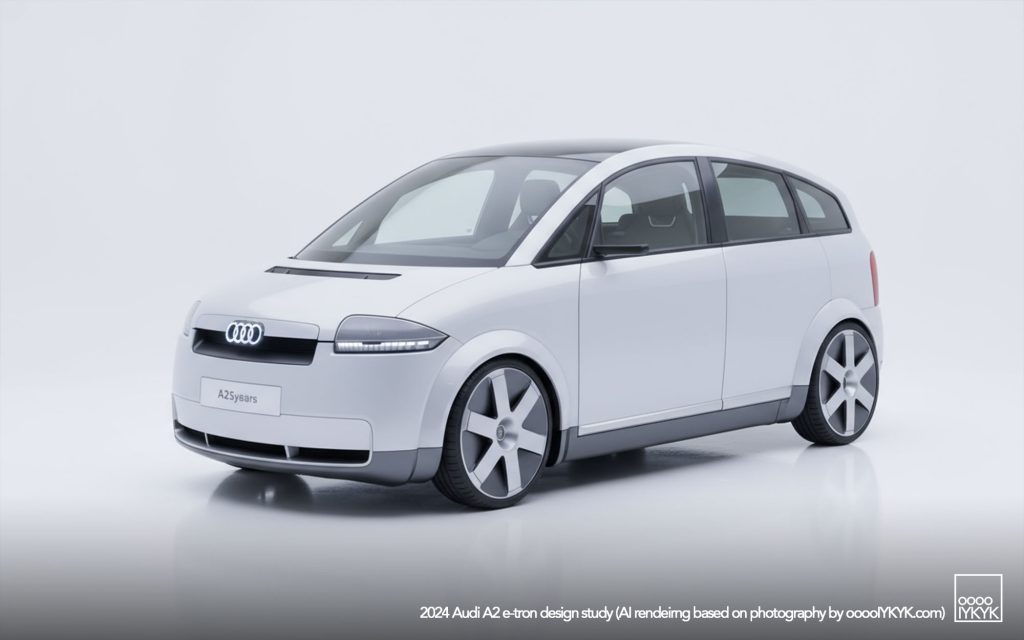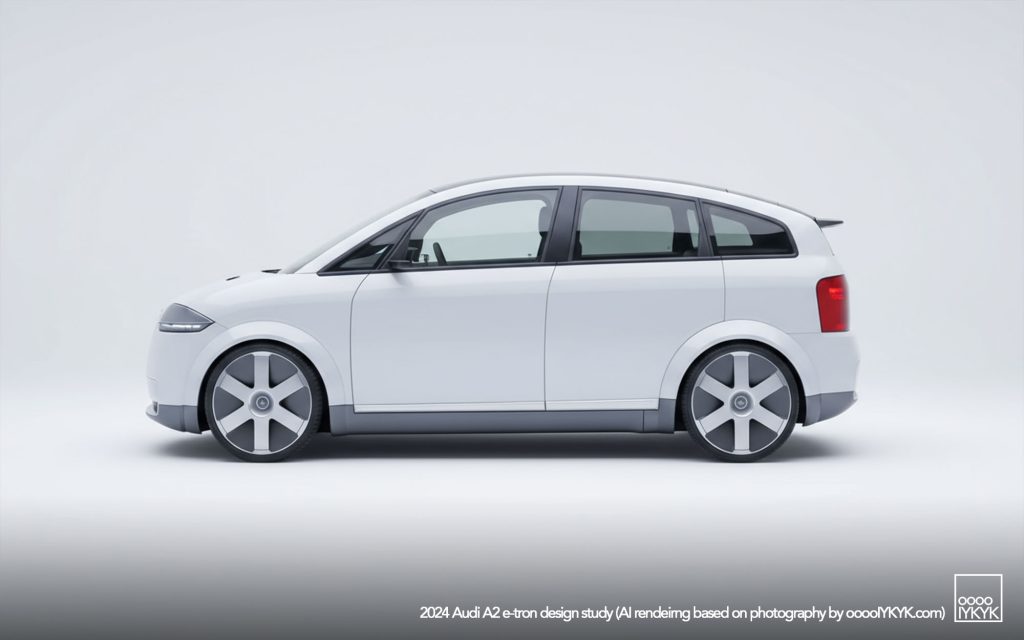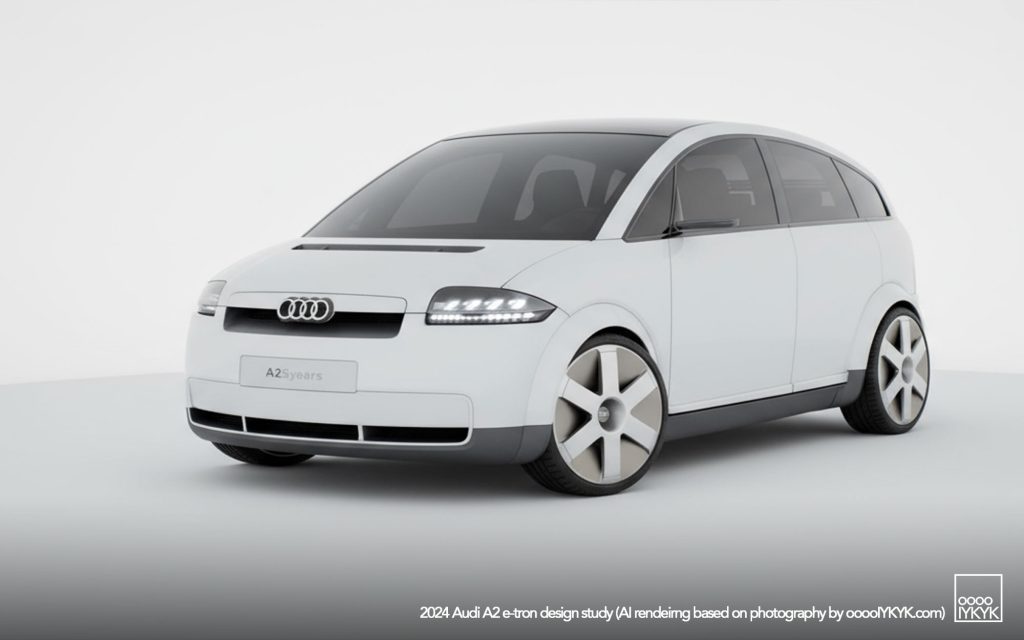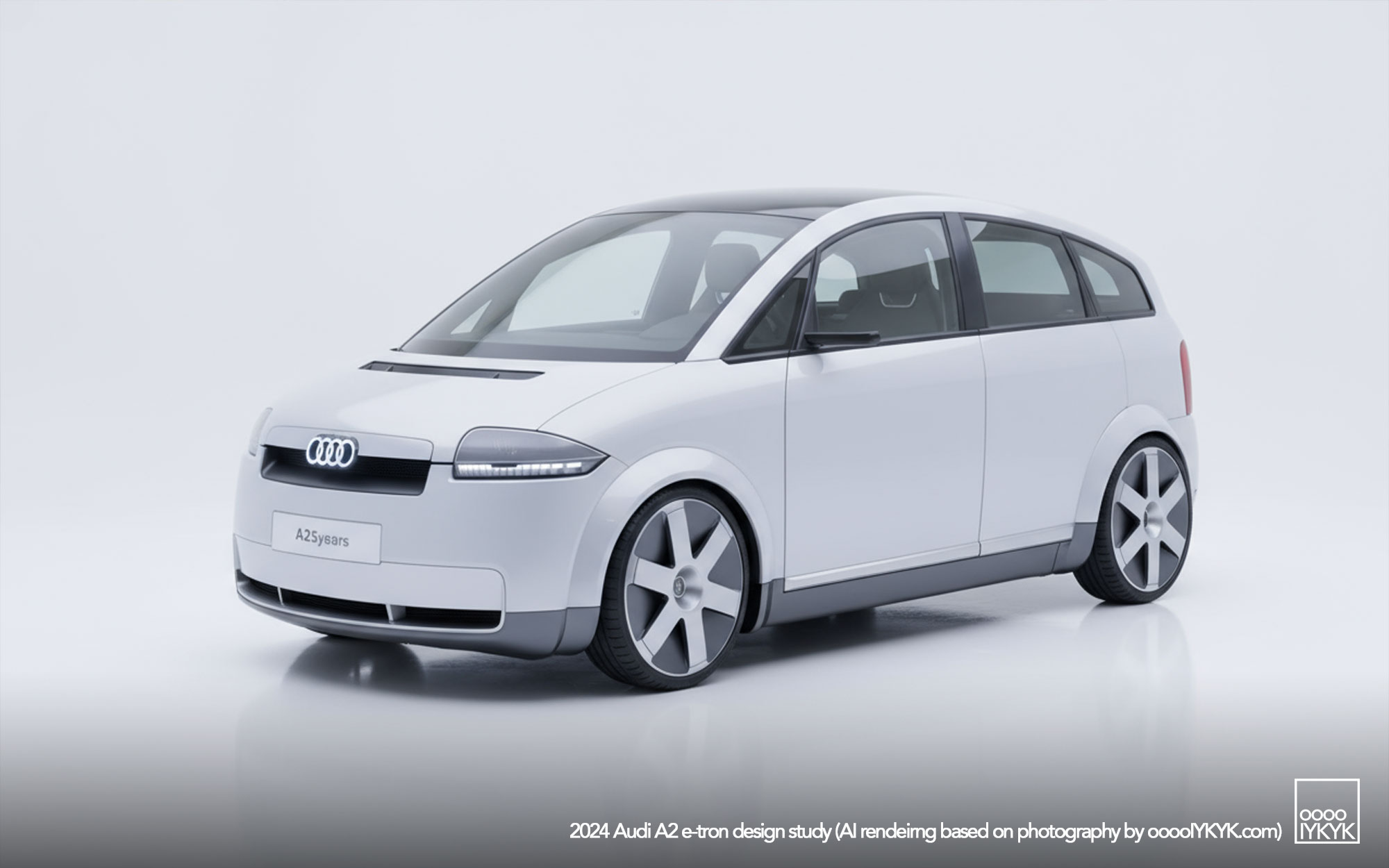What: Audi A2 e-tron design study
Model Family: A2 (type 8Z)
Debuted: N/A
Year: 2024
Number Produced: 1
Model / Generation Code(s): type 8Z
Chassis / Matrix: A04, PQ24
Motor: sourced (from the Audi Q8 e-tron)
Transmission: N/A
Battery: 25 kWh unit (from the Audi Q7 plug-in hybrid)
Power: 224 hp (165 kW)
Peak Torque:
Acceleration (0-100 km / 62 mph:
Energy Consumption: 14 kWh per 100 km
RELATED
Concept Cars: Al2 Open End, “Ringo” Prototype, Al2
Road Cars: A2 (type 8Z)
Race Cars: none
SUMMARY
The Audi A2 e-tron Concept is a one-off electric prototype created in 2024 by Audi trainees and students to mark the 25th anniversary of the original Audi A2. Developed within Audi’s apprenticeship programme, the project follows earlier student-led studies such as the RS6 GTO (2020) and the NSU EP4 (2023).
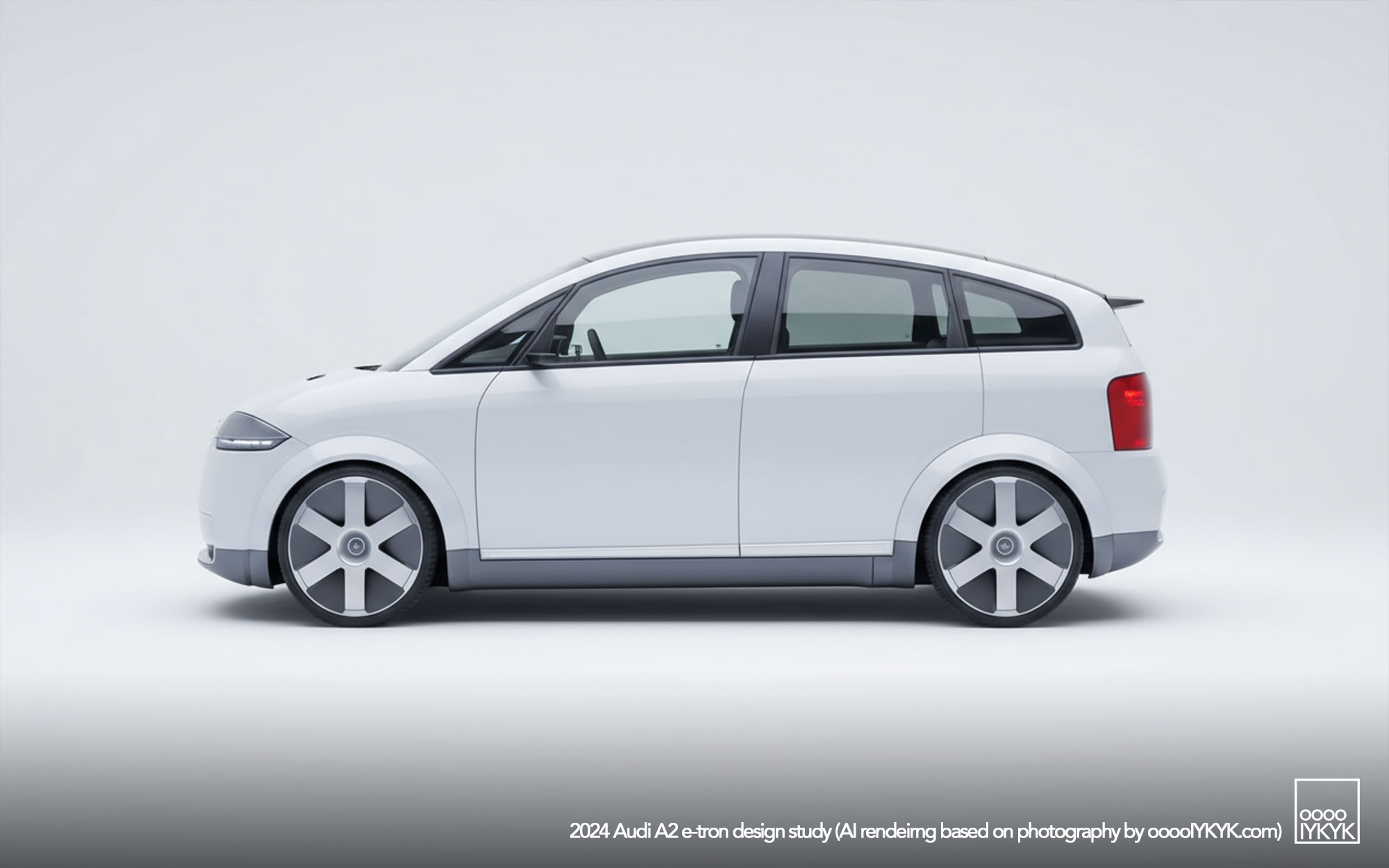
BACKGROUND
The concept was conceived as a tribute to the original Audi A2 (1999–2005), a lightweight aluminium-bodied hatchback recognized for its aerodynamic design and fuel efficiency. Audi presented the e-tron reinterpretation as part of its tradition of trainee projects, combining heritage elements with modern EV technologies.
TECHNICAL SPECIFICATIONS
According to electromobility sources including ecomento.de, the A2 e-tron Concept borrows components from existing Audi electrified models:
- Electric motor: sourced from the Audi Q8 e-tron, producing 224 hp (165 kW).
- Battery: a compact 25 kWh unit derived from the Audi Q7 plug-in hybrid.
- Energy consumption: estimated at 14 kWh per 100 km.
Although Audi has not officially confirmed drivetrain details, the compact battery size suggests the concept was intended as a short-range demonstrator rather than a near-production study.
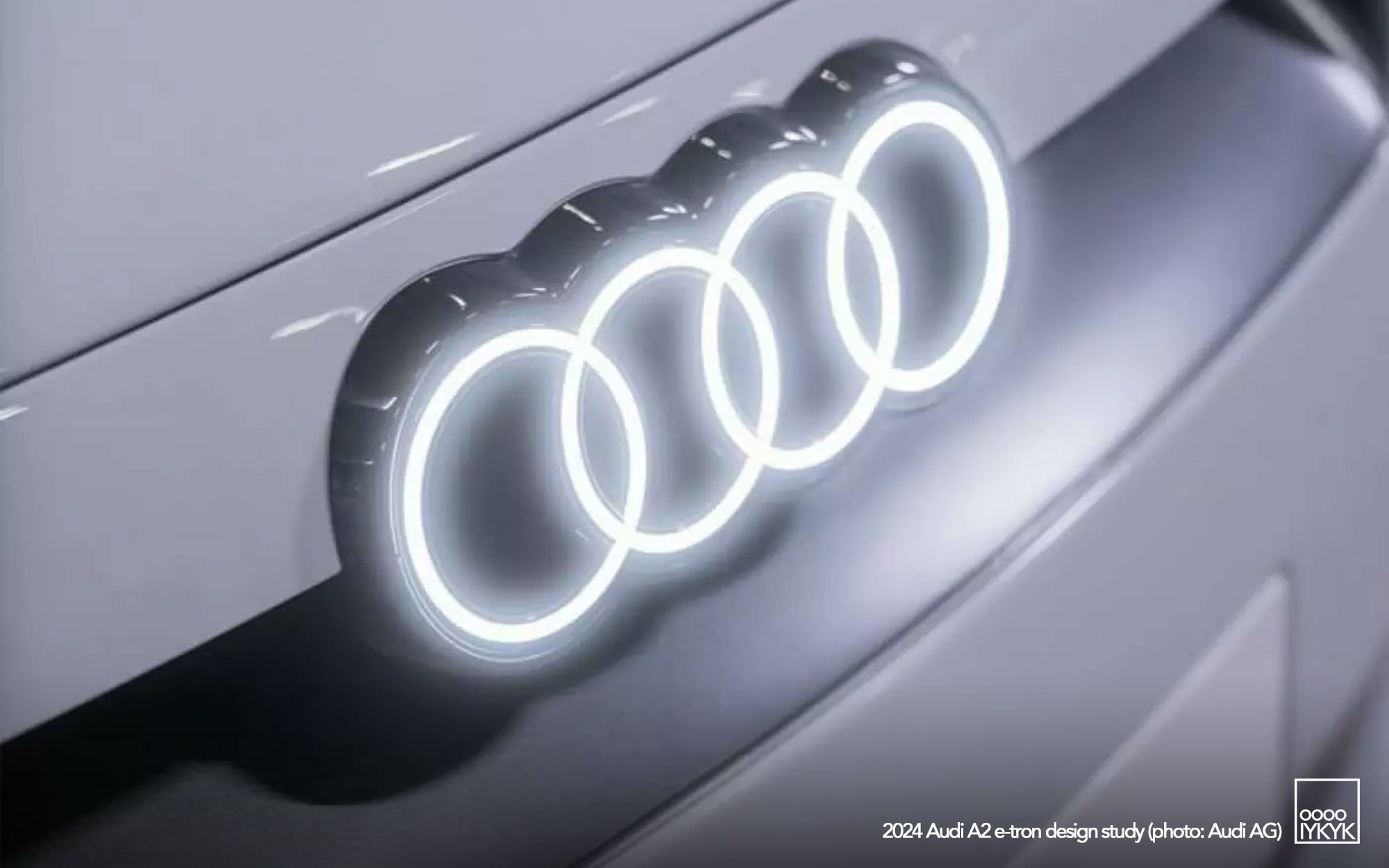
DESIGN
The A2 e-tron Concept retains the proportions of the original A2 while introducing a series of modernized features:
- Exterior:
- Redesigned grille, front and rear aprons.
- Relocated license plate from the tailgate to the rear apron.
- Replacement of conventional mirrors with camera-based systems.
- Updated slimline LED headlights and taillights.
- Illuminated Audi rings front and rear.
- A tailgate spoiler incorporating an LED third brake light.
- Closed-design alloy wheels to improve aerodynamics.
- Interior:
- Newly designed seats.
- Modified instrument cluster with EV-specific updates.
TECHNICAL BASIS
Audi has not confirmed the platform or drivetrain used in the A2 e-tron concept. At under 4.0 metres in length and 1,700 mm in width, the car is smaller than Audi’s current entry-level electric vehicle, the Q4 e-tron. It has been speculated that the MEB architecture used for the Q4 e-tron and other Volkswagen Group EVs may have been adapted for the prototype.
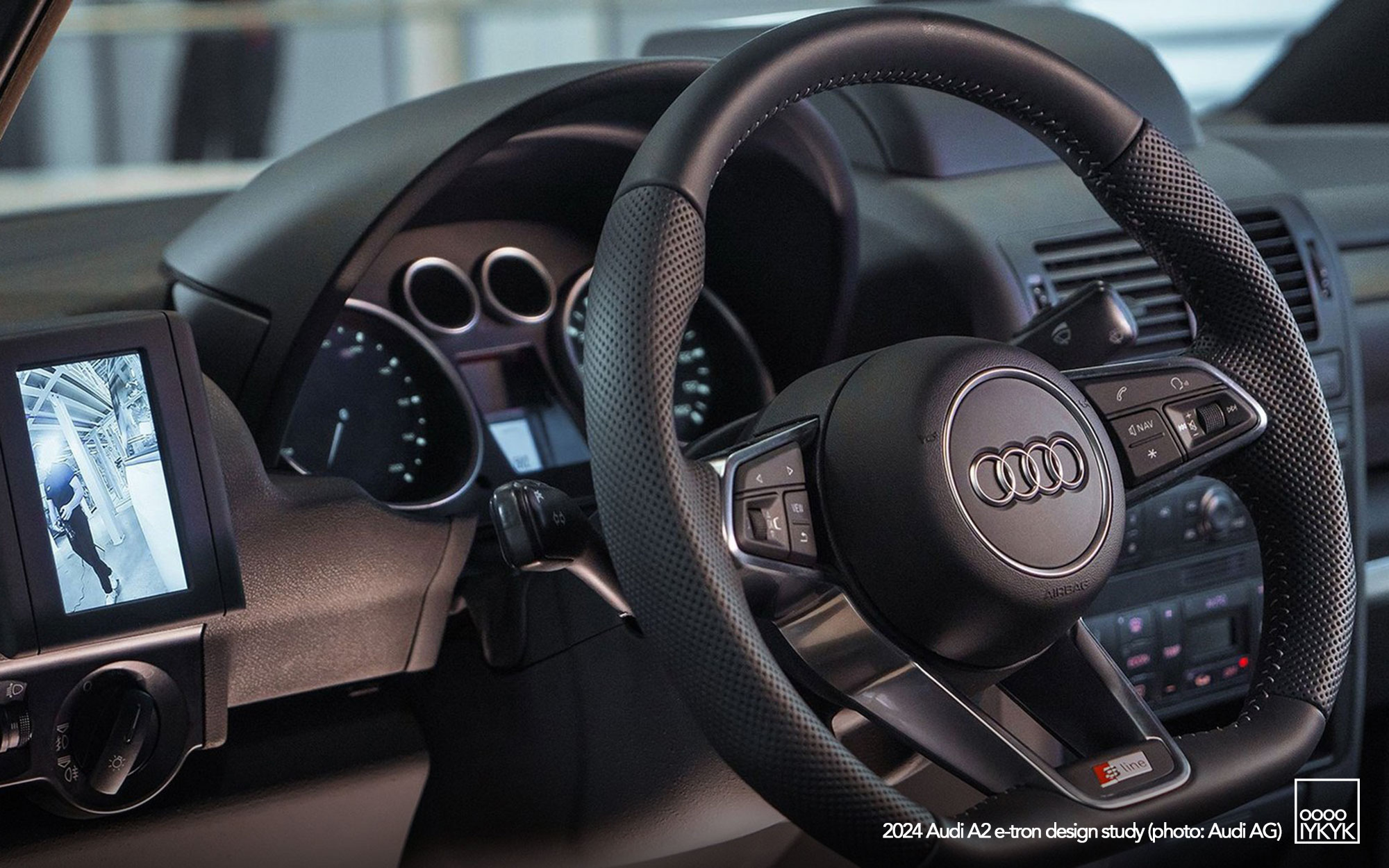
SUSPENSION
The project involved collaboration with KW Automotive, which had previously supported the NSU EP4 trainee project. For the A2 e-tron, KW supplied a modified version of its KW V3 coilover suspension, normally available for the original Audi A2.
While Audi A2-specific kits are not kept in stock, KW adapted its existing suspension system by altering damper design and spring rates to account for the additional weight and distribution of the electric drivetrain. The company emphasized that parts certificates are available for A2 owners seeking to retrofit similar systems.
CONTEXT & RECEPTION
The A2 e-tron Concept was primarily a design and training exercise rather than a production study. Audi has not announced plans to bring the model to market. However, its unveiling coincided with speculation regarding Audi’s future entry-level EV strategy. Industry observers have suggested that a production A2 e-tron could emerge as early as 2027, positioned below the A4 e-tron and Q4 e-tron, and in line with Audi’s naming convention of assigning even-numbered designations to electric models.
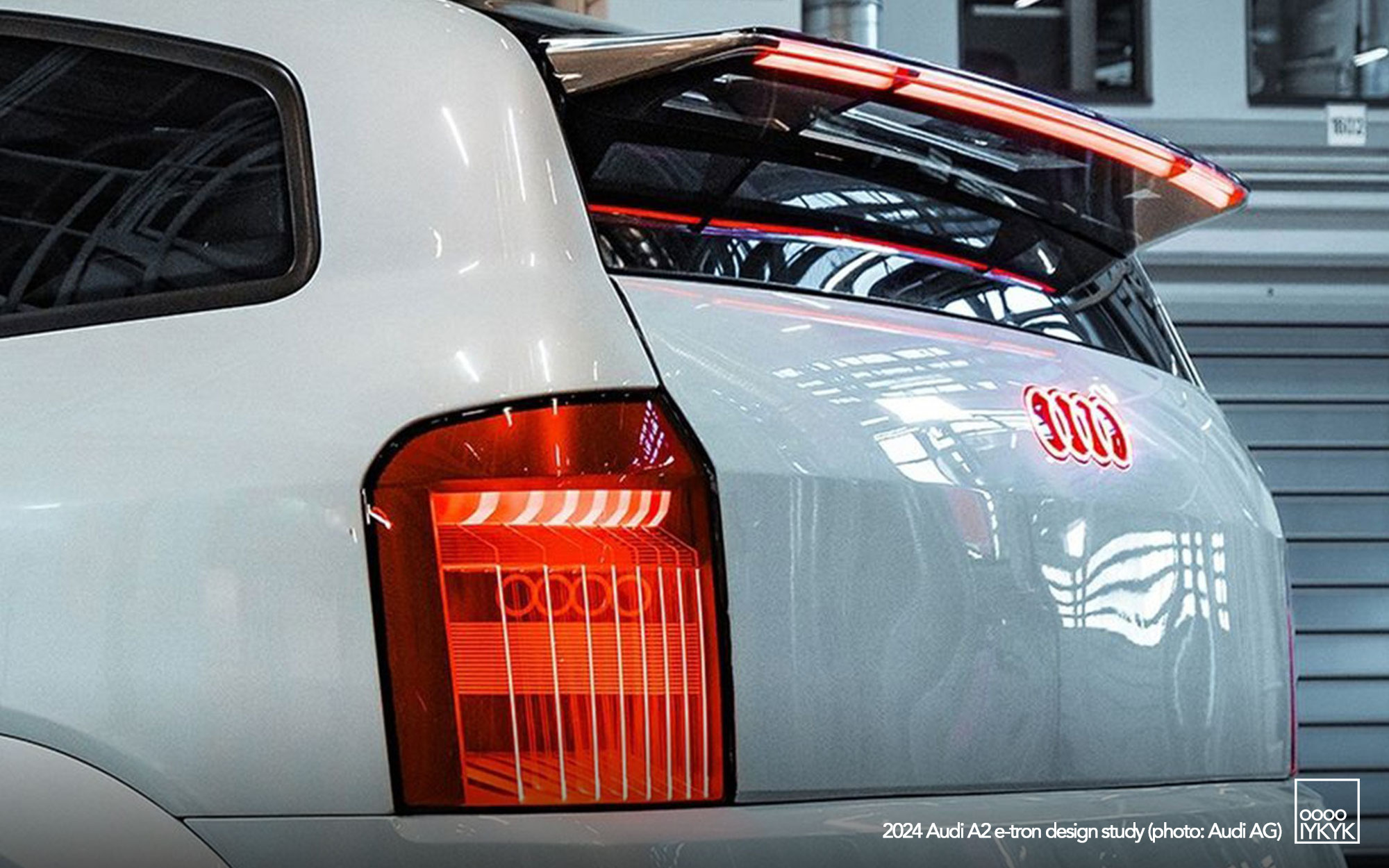
LEGACY OF THE A2
The original Audi A2 (1999–2005) remains notable for its aluminium space frame construction, drag coefficient as low as 0.25, and efficient petrol and diesel engines. Despite its engineering innovation, high production costs and limited practicality compared to rivals led to relatively low sales. The A2 was not directly replaced after its discontinuation, but it is now regarded as a pioneering effort in lightweight, efficiency-oriented design.
SEE ALSO
- Audi A2 (1999–2005)
- Audi A2 “Ringo” prototype (1995)
- Audi Al2 concept (1997)
- Audi Al2 Open End concept (1997)
- Audi A2 concept (2011)
- Audi AI:ME concept (2019)
PHOTO GALLERY
